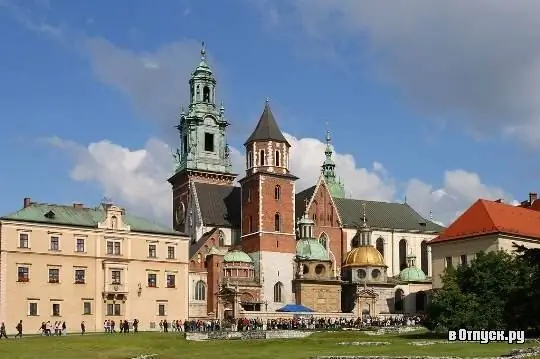
Description of the attraction
Cathedral of Saints Stanislav and Wenceslas - the cathedral of the Krakow Archdiocese of the Catholic Church, the place of the coronation of Polish kings and their burial place. 17 kings, members of royal families, political leaders are buried here. The cathedral is located in Krakow on the Wawel Hill.
On the site of the present church, two other churches were previously located: the Church of St. Wenceslas, built in 1020, and the Church of St. Stanislaus, built by Boleslav II the Bold, which burned down in 1305. A few years later, the bishop of Krakow Nanker began construction of the third Gothic cathedral. Construction began with the Chapel of St Margaret (now the sacristy), the altar was completed in 1346, and the cathedral was fully completed in 1364. The grand opening took place on March 28, 1364 in the presence of King Casimir the Great, and the cathedral was consecrated by Archbishop Yaroslav Bogoria Skotniki. The cathedral, built of bricks and white limestone, was a three-aisled basilica.
Since until 1609 Krakow was the Polish capital, the cathedral served not only as a royal temple, but also as a court burial vault. The Polish queen, St. Jadwiga, was buried in the cathedral in 1399, and in the 17th century the mausoleum of St. Stanislav Szczepanovsky, a bishop killed by King Boleslav II and numbered among the holy martyrs, appeared in the church.
During the period of the "Swedish Flood" in 1655-1657, many works of art were destroyed in the cathedral, and the building itself was destroyed by the Swedes in 1702. During the Second World War, the cathedral was plundered by the Germans and later closed.
In 2010, President Lech Kaczynski and his wife were buried here.






